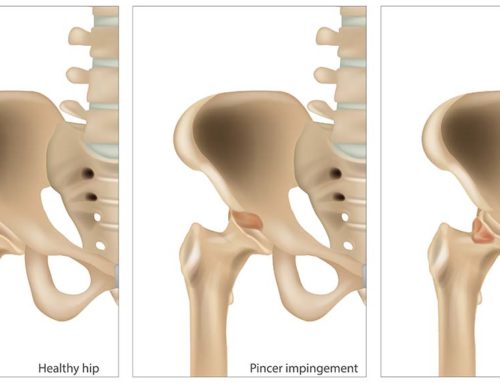Kids and Strength Training: Is it Ok?
Many people believe that kids should not be doing resistance training. Perhaps to some, it is a controversial subject, but if we’re listening to the best evidence on the topic, it’s completely acceptable for kids to be doing resistance training. Of course, there is some common sense that should be applied. There are lots of ways a young athlete can be injured doing weights, but in general strength training is completely healthy for kids if done in a safe, structured manner.
The notion that strength training isn’t good for kids likely stems from the 1970′ and 1980’s when the National Electronic Injury Surveillance System (NEISS) of the U.S. Consumer Product Safety Commission gathered statistics from the emergency departments of various hospitals across the country. They extrapolated their findings to conclude that resistance training leads to many youth injuries. Was this data interpreted properly? Apparently, under further examination, many of these injuries were related to unsafe lifts, excessive loads, unsupervised sessions and unsafe equipment. In a sense, you could say these cases were kids who were “goofing around” in a gym and got hurt. Does that mean that strength training is harmful to a growing athlete? I don’t think that’s a fair conclusion and neither do the experts in the field of youth strength training. A better question would be whether in a controlled setting with proper strength and conditioning principles being followed, is resistance training harmful to the developing child (independent of rare accidents)? The science says no. Resistance training isn’t unsafe for kids, but it certainly can be if you jump into it head first and start with technical lifts using excessive loads. I suppose you could say this is logical. You could also say that gymnastics isn’t safe if you let a bunch of kids who have never done it before be unsupervised in a facility full of bars, springboards, trampolines and rings and tell them to, “go for it”. Does that mean kids shouldn’t do gymnastics? I think not.
Will strength training stunt a child’s growth?
A common misconception is that strength training will stunt a child’s growth. According to the literature, this isn’t exactly true, although I suppose there are rare circumstances of injury when the growth of a bone may be altered from trauma. If I were speculating as to where the idea of stunted growth from resistance training came from, it’s likely related to the fear of growth plate fractures. Growth plates exist in our bones while we are still in our growing years. This area of the bone is where rapid cell division occurs, causing an elongation of the bone over time. Fractures can occur from trauma to this area. Termed ‘Salter-Harris fractures’ when the growth plate fracture separates, these injuries can occur from sporting trauma, playground accidents, motor vehicle accidents and, strength training accidents, to name a few. When a growth plate fractures, the future growth of the bone may be disrupted. This isn’t always the case, however, as many young people who suffer a growth plate fracture continue growing normally without any harmful lasting effect. To put it in perspective, most fractures in kids are not growth plate fractures, and most growth plate fractures don’t end up drastically changing the way the bone eventually develops. This only happens sometimes. The larger question then is, does weight training in growing individuals lead to a higher incidence of epiphyseal plate fractures (growth plate fractures)? And the answer would be “no.” If we compare the incidence of growth plate fractures in kids to other sports or activities, weight training does not show a greater incidence. As mentioned above, growth plate fractures can occur while playing sports, falling off a playground, slipping on ice and of course they can also possibly occur during weight training if there was an ‘accident.’ Perhaps an easier way to say it is that allowing your child to weight train in a supervised setting with a proper graduated program is no riskier for growth plate injuries than most reasonable sporting activities.
Are growing athletes more susceptible to soft tissue injury?
Anyone at any age can experience a soft tissue injury from weight training. Again, this risk is reduced if the athlete uses logical, safe strength and conditioning principles. This would entail a supervised, gradually progressed program using proper technique. In kids, the soft tissue injuries related to resistance training is more likely to occur in the trunk. Some authors speculate that this is because some kids are more focused on certain muscles and not the foundational core muscles, but I’m not sure I entirely agree with this opinion (since it just seems like a guess from a few authors). From what I’ve read it doesn’t seem that a growing athlete is any more at risk for soft tissue injury related to resistance training than any other athlete at any age.
In general, the risk of an injury related to resistance training in a young athlete is relatively low when compared to other sports. Several studies have shown injury rates to be between 0.029 and 0.055 per 100 participant hours, which is considered very low. Rugby, for example, has shown an injury rate of 0.800 per 100 participant hours, which is much higher than for the risks found in strength training.
So, if proper strength and conditioning principles are adhered to, resistance training isn’t necessarily unsafe for growing athletes. In fact, there are benefits other than the obvious gains in muscular strength and hypertrophy. Resistance training has been shown to reduce the rates of bone and soft tissue injuries related to some sports. Perhaps the easiest way to appreciate the beneficial effects of resistance training on a child’s bone is to think of an elderly person who has been diagnosed with osteoporosis. A common recommendation for these patients is to incorporate some safe resistance training to their exercise program in an effort to stimulate bone mineralization. This means that the bone content will become stronger or denser. The same response to a safe, appropriate load occurs in kid’s bones. If done properly kids can also see increased bone mineralization in response to resistance training, which thereby protects the bone from a fracture in the future. As one example, a study done on youth soccer players found that those who participated in regular resistance training had better bone mineralization when compared to a control group.
In general, careful resistance training causes tissues to adapt positively. Muscles hypertrophy, neural connections are optimized, and bone can be made stronger over time. Tendons also adapt to repeated load as long as the load does not cross the injury threshold and cause injury. Studies have shown that tendon tissue can adapt to strength training and actually thicken. This will have a protective effect in an athlete and the same adaptation can occur in kids.
Summary
In summary, we must all recognize the large body of literature showing that strength training is not inherently harmful to young people. During the growth years, new neural connections are forming, various structures and systems are maturing, and cells are dividing. This period of rapid change is an ideal setting for the changes associated with resistance training. Gymnasts, for example, benefit from a solid foundation of strength and athleticism that they can benefit from for the rest of their lives. Obviously, the most important variable here is whether the resistance training is done properly. Kids that endeavour to begin resistance training need proper direction and advice. They obviously need to start with body weighted exercises and learn how to move properly. If they progress to using weights, they need to be taught the proper lifting techniques and form. They need to be supervised in the gym. They also need help in choosing the appropriate exercises and resistance. Perhaps it goes without saying that most kids should have a professional working closely with them to make sure it all goes well.
(If you’re curious about the background literature and a more thorough explanation than what was provided here, I highly recommend you familiarize yourself with the NSCA and their position paper on youth strength training).
References
Granacher U, Lesinski M, Büsch D, et al. Effects of Resistance Training in Youth Athletes on Muscular Fitness and Athletic Performance: A Conceptual Model for Long-Term Athlete Development. Front Physiol 2016;7:164.
Negra Y, Chaabene H, Hammami M, et al. Effects of High-Velocity Resistance Training on Athletic Performance in Prepuberal Male Soccer Athletes. J Strength Cond Res 2016;30:3290-7.
Lloyd RS, Radnor JM, De Ste Croix MB, et al. Changes in Sprint and Jump Performances After Traditional, Plyometric, and Combined Resistance Training in Male Youth Pre- and Post-Peak Height Velocity. J Strength Cond Res 2016;30:1239-47.
Bedoya AA, Miltenberger MR, Lopez RM. Plyometric Training Effects on Athletic Performance in Youth Soccer Athletes: A Systematic Review. J Strength Cond Res 2015;29:2351-60.
Legerlotz K, Marzilger R, Bohm S, et al. Physiological Adaptations following Resistance Training in Youth Athletes-A Narrative Review. Pediatr Exerc Sci 2016;28:501-20.
Miller MG; Michael TJ. Strength Training and Conditioning. In: Patel DR, Greydanus DE, Baker RJ. editors. Pediatric Practice: Sports Medicine. New York: McGraw-Hill; 2009.
Lesinski M, Prieske O, Granacher U. Effects and dose-response relationships of resistance training on physical performance in youth athletes: a systematic review and meta-analysis. Br J Sports Med2016;50:781-95.
Milone MT, Bernstein J, Freedman KB, et al. There is no need to avoid resistance training (weight lifting) until physeal closure. Phys Sportsmed 2013;41:101-5.
Faigenbaum AD, Westcott WL, Loud RL, et al. The effects of different resistance training protocols on muscular strength and endurance development in children. Pediatrics 1999;104.
Rians CB, Weltman A, Cahill BR, et al. Strength training for prepubescent males: is it safe? Am J Sports Med 1987;15:483-9.
Ramsay JA, Blimkie CJ, Smith K, et al. Strength training effects in prepubescent boys. Med Sci Sports Exerc 1990;22:605-14.
Faigenbaum A, Zaichkowsky L, Westcott W, et al. The Official Journal of the North American Society for Pediatric Exercise Medicine and the European Group of Pediatric Work Physiology. Pediatr Exerc Sci1993;5:339-46.
Falk B, Mor G. The effects of resistance and martial arts training in 6- to 8-year old boys. Pediatr Exerc Sci 1996;8:48-56.
Lillegard WA, Brown EW, Wilson DJ, et al. Efficacy of strength training in prepubescent to early postpubescent males and females: effects of gender and maturity. Pediatr Rehabil 1997;1:147-57.
Sadres E, Eliakim A, Constantini N, et al. The Effect of Long-Term Resistance Training on Anthropometric Measures, Muscle Strength, and Self Concept in Pre-Pubertal Boys. Pediatr Exerc Sci2001;13:357-72.
Hamill B. Relative safety of weightlifting and weight training. J Strength Cond Res 1994;8:53-7.
Brown EW, Kimball RG. Medical history associated with adolescent powerlifting. Pediatrics1983;72:636-44.
Myers A, Beam N et al. Resistance training for children and adolescents. Transl Pediatr. 2017 Jul; 6(3): 137–143.
Faigenbaum, AD, Kraemer, WJ, Blimkie, CJR, Jeffreys, I, Micheli, LJ, Nitka, M, and Rowland, TW. Youth resistance training: Updated position statement paper from the National Strength and Conditioning Association. J Strength Cond Res 23(5): S60–S79, 2009.








